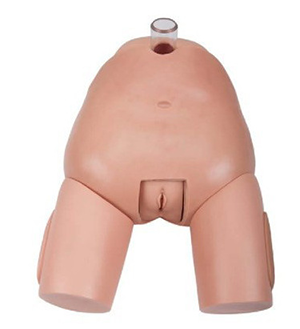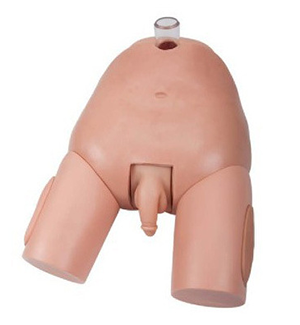Welcome to visitShanghai Chinon medical Model & Equipment Manufacturing Co., LTD
Bladder puncture is a common clinical procedure, usually used for urine sample collection, catheter insertion, or therapeutic puncture. Although the technology is relatively simple, due to the high precision of the operation, any mistake can lead to patient discomfort or complications. Therefore, how to improve the operation level of medical staff through effective training means has become an important issue in medical education. As an advanced teaching tool, whether bladder puncture model can provide more practical experience for medical training has become the focus of experts in the industry.

The clinical significance of bladder puncture model
Bladder puncture seems simple, but in practice, many factors need to be considered, such as anatomical structure, individual differences of patients, choice of puncture site, and prevention of complications. Simulation training is an important learning tool for new healthcare professionals, helping them to familiarize themselves with the procedure and reduce the probability of making mistakes in the actual clinic. By using the bladder puncture model, healthcare professionals are able to practice repeatedly in a risk-free environment, improving the accuracy of the technique and thereby improving the quality of patient care.
Application and training effect of bladder puncture model
The bladder puncture model is designed with a high degree of simulation, which can accurately simulate the human body structure and the details of the puncture process. Models are often equipped with replaceable parts, simulate patients of different ages, body types, and even have the ability to simulate physiological responses (such as urine excretion). This is important for healthcare professionals because different patients may encounter different challenges during bladder puncture, such as anatomical differences or pathological changes.
According to a study in the 2022 Medical Education and Training Study , health care workers trained using the bladder puncture model increased their success rate by 20% in practice. In addition, these trainees were able to cope with complex situations (such as bladder abnormalities or patient incoordination) in less time than their counterparts who did not undergo simulation training. This shows that the bladder puncture model can help medical staff operate more accurately and efficiently in stressful clinical Settings, reducing the risk of technical inproficiency.

Data support: practice effect and learning outcome
A 2023 simulation training study conducted by a university medical center found that in addition to the improved accuracy of the operation, the medical staff trained by the bladder puncture model also significantly improved their clinical judgment ability and risk identification ability. Specific data showed that the training group's ability to warn and manage complications during the puncture process improved by 30%, and the patient comfort score during the operation also increased.
More importantly, model training allows medical staff to constantly correct their operational skills and identify and improve potential errors. For example, in the simulation process, students can adjust the Angle and depth of the needle through real-time feedback, and gradually learn how to effectively avoid the risk of vascular damage or bladder puncture failure. The study also showed that through continuous simulation, medical staff not only mastered the standard operating procedures, but also made reasonable adjustments when encountering complex cases, thus improving clinical resilience.
Easy science: Why bladder puncture models are important for training?
Imagine that you are a health care worker who has just entered the clinic and is facing a patient who needs a bladder puncture for the first time. In the face of real patients and environments, nervous emotions and unfamiliar procedures can be intimidating. Through the training of the bladder puncture model, you can familiarize yourself with the entire operation process, from the selection of the puncture site to the precise insertion of the needle, to the final care process, without pressure. In the simulation process, the feedback of the model can help you adjust in time to avoid mistakes, and you will be more confident and calm when facing the actual patient.
Conclusion
As a high simulation tool, bladder puncture model can provide more practical experience for medical training. By accurately reproducing the various challenges of the puncture process, it helps the medical staff to perform repeated exercises in a risk-free environment, improving their operational accuracy and resilience. The data show that the success rate and clinical judgment ability of medical staff have been significantly improved through model training. In the future, with the continuous innovation of medical education models, bladder puncture models will play an increasingly important role in improving the skills of medical staff and reducing clinical risks, so as to provide a stronger guarantee for patient safety.
|
NEXTпјљIs the low bandaging model suitable for beginners' basic training?
LASTпјљBack Simulation Acupuncture Practice Platform - Simulation Practice |
Return list |